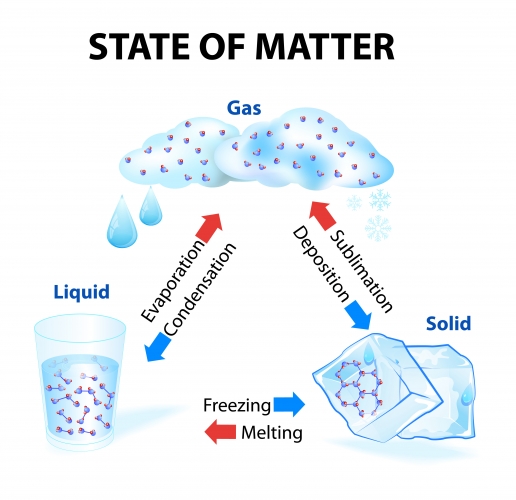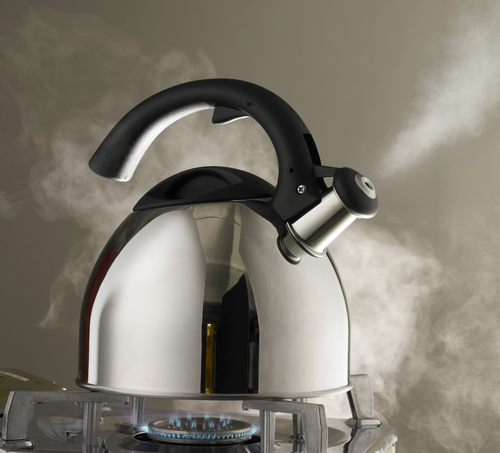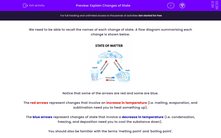We need to be able to recall the names of each change of state. A flow diagram summarising each change is shown below.

Notice that some of the arrows are red and some are blue.
The red arrows represent changes that involve an increase in temperature (i.e. melting, evaporation, and sublimation need you to heat something up).
The blue arrows represent changes of state that involve a decrease in temperature (i.e. condensation, freezing, and deposition need you to cool the substance down).
You should also be familiar with the terms 'melting point' and 'boiling point'.
The melting point is the temperature at which a particular solid turns into a liquid (and the same temperature that the liquid turns back into a solid).
The boiling point is the temperature at which a substance evaporates and condenses. For example, the boiling point of water is 100ºC, meaning that water turns into vapour (and vapour turns back into water) at this temperature.

Conservation of mass
A change of state is a physical change. This means that a chemical reaction does not occur, and the structure of the molecules in a substance do not change. For example, a water molecule remains as H2O, even if the water is being frozen into ice, or evaporated into steam.
For this reason, all changes of state are reversible. This means that something can be turned into a solid, liquid, or gas, and turned back into its original state as long as it is brought back to the correct temperature.
The principle of the conservation of mass is that matter is not created or destroyed in any change of state. The total mass in any process remains constant. If you melted 100 g of ice, you would have 100 g of water. If you then completely boiled this water, you would make 100 g of steam. You cannot make new matter, nor can you ever get rid of it.
Does that make sense?

Let's try some questions on this now.







